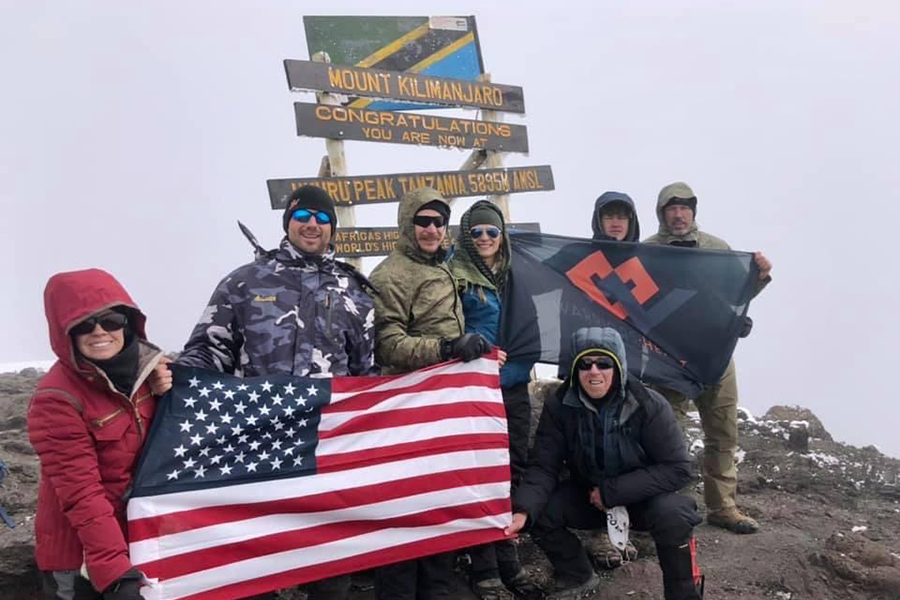Business is a high contact – team sport.
Many of us end up spending the majority of our time driving our businesses, careers, and passion. We invest countless hours every day in accomplishing our vision, goals and sometimes just to hold it all together.
The below five tips have been battle-proven.
1. Business is a team sport
If you want to “do it on your own,” good luck with that. You will always be limited to your own time, energy and thoughts.
Any worthy cause takes a team to accomplish. Our vision gets to be bigger than ourselves. Your mission will determine the team needed. Once clear on the mission, you can then put together or restructure your current team. Build a team of mission-driven professionals that can also clearly see the vision, commit to its daily discipline and bring talents to the table that you are lacking.
For example, in 2012, Tom Spooner, a retired U.S. Army Delta Operator with 21 years of service in the U.S. Army (1990-2011), brought to my awareness that 22 veterans a day commit suicide. We are losing more of our nation’s heroes at home than in combat. That was so alarming that my wife Lisa and I felt compelled to partner with him to help address this national crisis.
Tom brought skills and access into the military that I did not have, and together, we created Warriors Heart in 2016, as the first and only private and accredited treatment program in the U.S. that is exclusively for military, veterans, and first responders struggling with addiction, PTSD, mild TBI, and co-occurring issues.
2. Build a Team of Advisors
It’s important to always bring in new ideas and information. One idea could have a significant, positive impact on the mission and your bottom line.
For instance, joining a network like E.O., YPO or Vistage is a fast track to like-minded peers. When importing new ideas, it’s always best to seek out others who have accomplished or been successful in the area of interest — knowledge from “experienced-based” advisors.
In addition, look at your existing team as Advisors, which may include your attorney, CPA, bankers, and more. Put together quarterly meetings to bring all of your “advisors” together for a working dinner. Open the meeting with your vision or problem you need to solve. Then, sit back and let the Advisors work through it. Putting them all in the same room together will save you a lot of back and forth.
3. Study Together
Once your team is in place, pick a book (that supports your mission/desired outcome) and study it together. For example, our team is currently studying Tribal Leadership by Dave Logan, John King, and Halee Fischer-Wright. We invest 90 minutes every Friday. A section of the book is discussed. We ask, “What is the author saying and, how does it apply to us?” (if it does). As a result, everyone gets on the “same page” (literally), and our language is the same. This strengthens culture.
Since 2002 and building/selling successful businesses, our goal has always been to develop people to create positive change. We are social entrepreneurs.
In 2021, members of the Warriors Heart team participated in a year-long training program led by Leadership Master Expert and Author Blair Singer. Out of our team of 137, seventeen (17) qualified for the Mountain Leadership Experience to climb Kilimanjaro in Africa. This was a life-changing event!
Even during the pandemic, when so many businesses were pulling back, we accelerated in the investment of people.
4. Host an AAR (After Action Review) after Major Events
It’s essential to conduct an AAR (After Action Review) after a significant event with your team. An AAR-driven event could be as simple as a failed sales presentation or a manufacturing breakdown to a huge contract win.
An AAR is simply a structured approach for reflecting on, identifying strengths, weaknesses, and areas for improvement.
An AAR is centered on four questions:
First, what was expected to happen?
What actually occurred?
What went well and why?
What can be improved and how?
Warriors Heart remained open throughout the pandemic and provided continuous care as an “essential service.” Our mission must continue, and the AAR disciplined practice supported the team, the fears, the unknowns. And together, we were able to work through the uncharted waters.
5. FOCUS (Follow One Course Until Successful)
FOCUS is easier when you are small and just starting out. It comes into play when you have a level of success and available resources. Why – because the mind wants to think, “I can do it too.” While this might be true…. be careful it does not create mission drift and pull your (and the teams) focus away from the main objective.
For example, an excellent question to ask is – If we were to invest $500,000 into this other project and hire x amount of people or pull x amount of existing team members off their current project to work in this new one… what would it return?
VS
What would that return be if we were to invest the same amount of money and resources into our existing business?
Look at the return holistically – people, planet, and profit.
Then you will have a clearer vision to move forward or not.




































